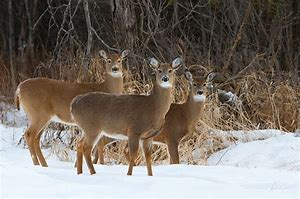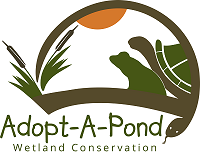Pickering is fortunate to have fresh water habitats, including creeks, rivers and streams that provide food, water and shelter for many animals and birds, including the beaver.
Beavers are the largest rodent in North America and are documented to have lived thousands of years ago. They typically live in lodges constructed from branches, mud, and other debris, or in dens dug into the banks of streams or lakes. Beavers are herbivores and consume tree bark, aquatic plants and grasses. To honour its historical significance, the beaver was made an official Symbol of Canada on March 24, 1975.
The City embraces the critical role that beavers play in our ecosystem. Beaver dams help create wetlands and reduce erosion to our waterways, as well as benefit rivers, streams, and local fish populations. These positive aspects make their presence desirable, despite the damage they often do.
Benefits of Beavers
Beaver presence leads to an increase in biodiversity of plant and animal communities. Historically, wetland habitats in the GTA have been reduced by as much as 85%. Wetland habitat is critical to support many species of birds, fish, amphibians and mammals. Once trees have been felled and water levels increase, plant communities undergo significant change, generally becoming more diverse.
Beaver activity can also lead to improvements in water quality and the storage of water on the landscape improves resiliency to drought. Beaver dams slow the current significantly, leading to sediment deposition and the establishment of aquatic plant communities, many of which help to remove excessive nutrients, sequester heavy metals and other contaminants as well as provide vital resources for wildlife. Impounded water can better permeate the ground and recharge groundwater. In addition, the deeper pools that are created behind the dam help reduce water temperatures and maintain stream flow during hot, dry summers.
Beavers reduce the impacts of flooding and erosion by slowing water and storing it on the landscape. By slowing the water, the stream's energy is reduced, thereby reducing it's erosive forces and the damage caused by erosion. Reducing the severity of stream erosion helps to keep our natural systems functional and healthy.
While beavers can certainly create problematic conditions, and are often associated with tree loss and flooded impoundments, where their activity can be tolerated, they are associated with many environmental benefits. Beavers play a vital role in shaping our landscape and their activity helps improve the diversity and resiliency of our landscape for the future.
How is the City managing Beaver Activity?
When beaver activity is present, City Staff monitor the area, where beavers build their dams, to protect properties from flooding and prevent damage to high value trees.
Staff evaluate each situation individually and takes a collaborative approach across departments to determine the best solution. To this end, the City focuses on the following:
- Identifying the problem: flooding (of homes, parks or roads), tree damage, erosion, dam location, etc.
- Identifying the impact: to public safety, to the environment, or to existing wildlife.
- Determining best approach to resolve the problem
To reduce beaver activity, staff consider the following measures:
- Co-existing with beavers, while monitoring their activity
- Wrapping wire mesh around the base of existing trees (removing their food source will naturally discourage them from becoming established in an area)
- Planting trees that beavers don’t care for, like bushes, evergreens and hardwoods
- Installation of flow-through devices such as a beaver baffler (where appropriate)
- Notching existing dams
In situations where a beaver has been identified a threat to public safety or infrastructure, and other measures to mitigate the situation have been exhausted, the beaver may be trapped and euthanized. Trapping must be done by a licensed trapper, conducted in accordance with approved Ministry of Natural Resources guidelines, and is a final course of action for the City.
Further information on beavers can be found below:






